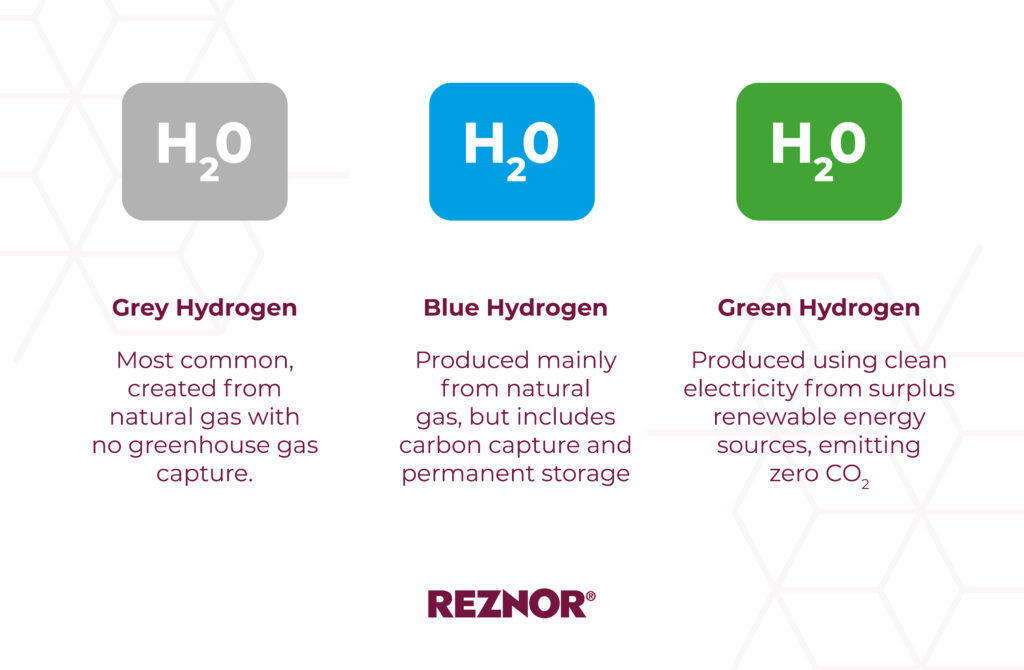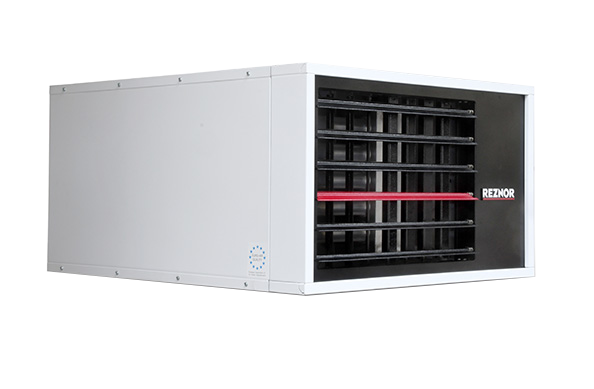If you didn’t already know, the UK as well as most of the world are working towards a more sustainable future in our energy usage, with each country having their own Net Zero targets. The UK has a goal to be Net Zero by 2050, but what does it actually mean? Reznor is here to explain the UK’s hydrogen strategy plan, with what you need to know as a HVAC expert.
Net Zero defined: a target of completely negating the amount of greenhouse gases produced by human activity, to be achieved by reducing emissions and implementing methods of absorbing carbon dioxide from the atmosphere.
The UK’s hydrogen strategy plan: summarised
With the UK’s Net Zero by 2050 goal, this will mean that all sectors of the economy will need to decarbonise. In some sectors this is already well underway such as for electrical power, although gas still supplies a significant proportion of the demand at peak times. There isn’t a single solution that offers a simple route to decarbonisation and we will surely need to mix different methods to achieve the end goal.
Heating sector
Decarbonising heat remains less clear. There are a number of technologies available, though all face significant barriers and complexity. The energy trilemma is at its most acute when it comes to decarbonising heat.
With the release of the Ten Point Plan for a Green Industrial Revolution, developing a low carbon hydrogen sector in the UK is a key factor of the government’s plan for a cleaner, greener energy system. So where do we start? You may hear the phrase ‘energy transition’ and ‘hydrogen-ready’, which will be key factors to progression.
“Companies are looking to adopt climate-friendly hydrogen as a flexible, infinitely renewable energy source. Hydrogen is gaining momentum due to the high degree of flexibility of its origination and uses. Not only can it be derived from traditional hydrocarbon-based sources, like oil, gas, or coal, but it also can be created using renewable wind- and solar-based electricity through a process called electrolysis.” - Reuters
According to ICOM (Industrial & Commercial Heating Equipment Association) there are broadly two main strategies for decarbonising the majority of buildings in the UK; expansion of the electrical network with installation of heat pumps, or changeover to a low carbon hydrogen gas grid for properties on the existing gas network.
Hydrogen-ready appliances are currently being worked on across the country by various businesses, which the legal definition hasn’t been decided yet by the government. Currently, a ‘hydrogen-ready’ appliance is one that work on natural gas and then, using a conversion kit, are modified to use hydrogen gas at a future date.
There are plenty of ongoing hydrogen blend projects such as HyDeploy, who are now working on evidence to support the government with their decision on hydrogen blending – expected in 2023.
These projects are exploring the possibilities and potential of adding hydrogen into the current gas network to reduce carbon emissions. You can find out more on this here.
Hydrogen Grey, Blue and Green: explained
The colour system of Hydrogen is defined by the process and to differentiate between the different types. Of course, the gas itself is colourless, however the colour system will be key in defining which appliances are more sustainably produced than others.

Grey Hydrogen
This is the most common production of hydrogen. Grey hydrogen is created from natural gas, or methane, using steam methane reformation but without capturing the greenhouse gases made in the process.
Blue Hydrogen
Blue hydrogen is produced mainly from natural gas, but still with an output of carbon dioxide. It is done using a process called steam reforming, which brings together natural gas and heated water in the form of steam. However, this process includes carbon capture and storage (CCS) to prevent the release of CO2 into the atmosphere.
Green Hydrogen
This hydrogen is made by using clean electricity from surplus renewable energy sources, such as solar or wind power, to electrolyse water. Electrolysers use an electrochemical reaction to split water into its components of hydrogen and oxygen, emitting zero-carbon dioxide in the process.
Green hydrogen currently makes up a small percentage of the overall hydrogen, because production is expensive. Just as energy from wind power has reduced in price, green hydrogen will come down in price as it becomes more common. - National Grid
The hydrogen strategy plan is underway and as we are a forward-thinking company, we’re already working on our own future innovations. These include working on heating solutions that are ready for hydrogen conversion, saving you money on full replacements.














